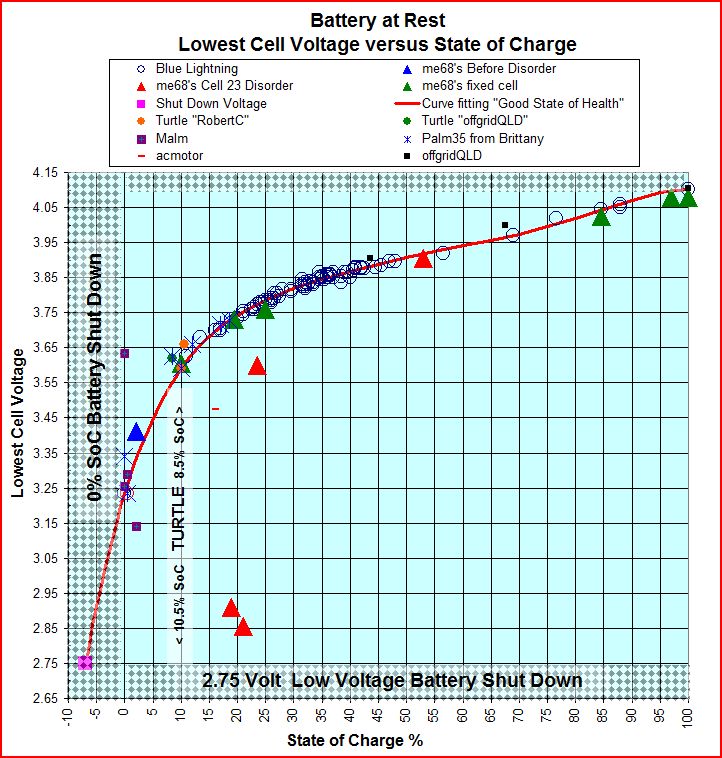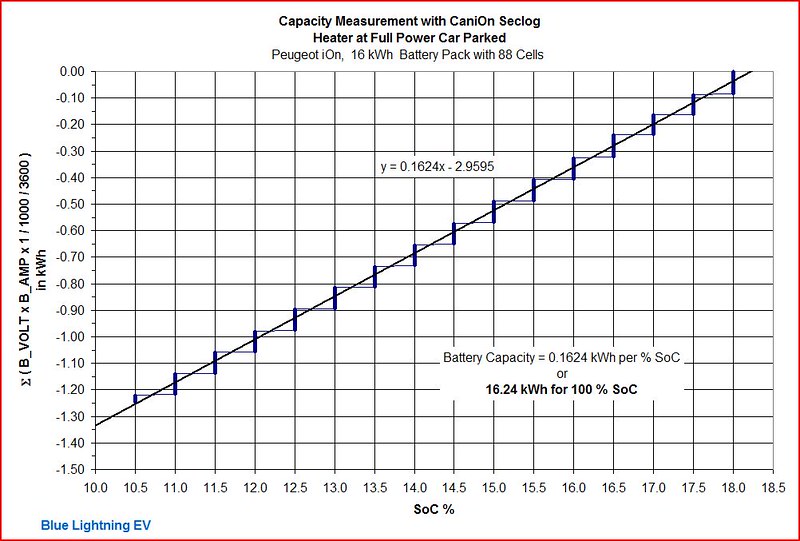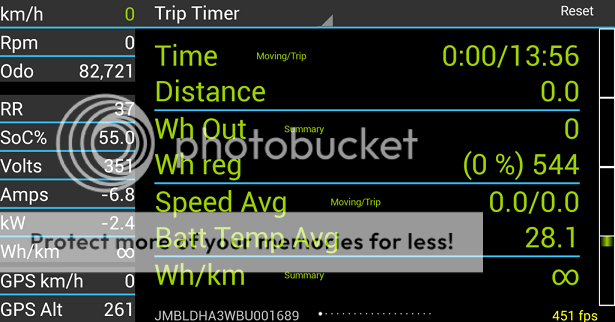Red triangle points on this graph are showing me68’s cell 23 collapsing, blue and green triangle are me68 voltages values before the problem and after the change of cell.
 Lowest Cell Voltage versus SoC
Lowest Cell Voltage versus SoC by
Blue I.ightning
Lowest cell voltage data are collected battery at rest.
If data are not collected battery at rest, then voltage becomes a function of amperage, and not of battery state.
Driving or heat on, higher is the amperage, lower is the voltage (1), so a battery shut down at 2.75 volt is there to avoid any damage to the lowest voltage cell.
Battery capacity will remain at its highest capacity if battery cells have the same voltage during charge or discharge.
So collecting the lowest cell voltage which must fit the red curve might be a more efficient way to check the state of health of the battery.
Red triangle points on this graph are showing me68’s cell 23 collapsing, blue and green triangle are me68 voltages values before the problem and after the change of cell.
At 23% SoC me68 had a battery shutdown “… 2,75V of cell 23, resulted in a shutdown of the battery from the Battery Management System, no matter which SoC was calculated” (4).
There was no “Turtle” warning before this shut down.
So Turtle is not voltage but SoC related and surprisingly a battery shut down is possible without warning, so again, thanks for Canion for providing us critical informations.
For a new battery, for a battery in a good State of Health, or recalibrated, Turtle will light up for some vehicles at 10.5 % of State of Charge and for other ones at 8.5 % SoC (2).
The battery will shut down for a 0% SoC (3). Malm with his “tricks”, heading now to a second earth circumference or 80 000 km, following the path of his ancestors, Magellan, Vasco Da Gama, and others, will show you irrational BMS behaviours (5).
(1) http://myimiev.com/forum/viewtopic.php?f=23&t=1789&p=17242&hilit=resistance+cell+battery#p17242
(2) https://forums.energymatters.com.au/alternative-vehicles/topic5388-310.html#p44207
http://myimiev.com/forum/viewtopic.php?p=12122#p12122
http://myimiev.com/forum/viewtopic.php?p=12698#p12698
(3) http://www.vehiculeselectriques.fr/topic13207-30.html#p181035
(4) http://myimiev.com/forum/viewtopic.php?p=23489#p23489
(5) https://www.youtube.com/watch?v=PkWW5w2e4XU




































